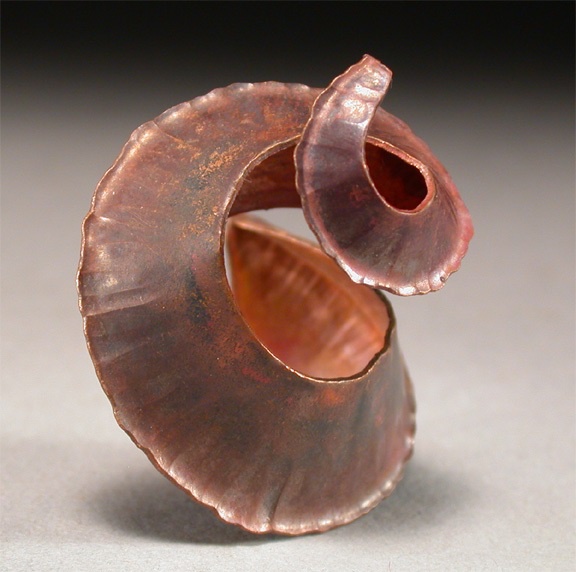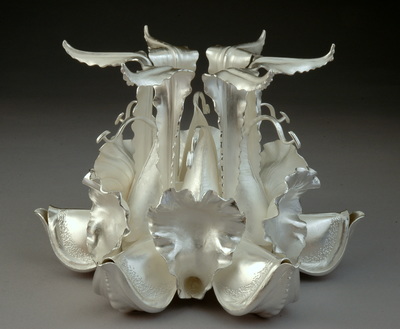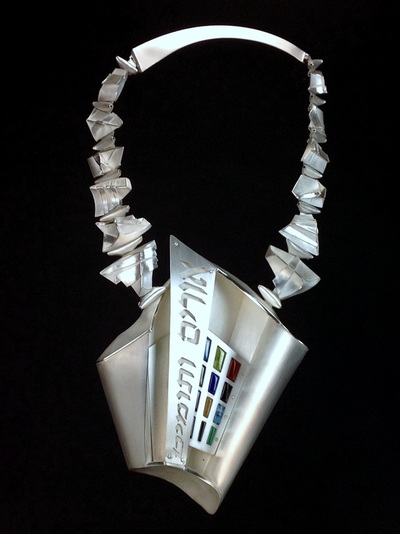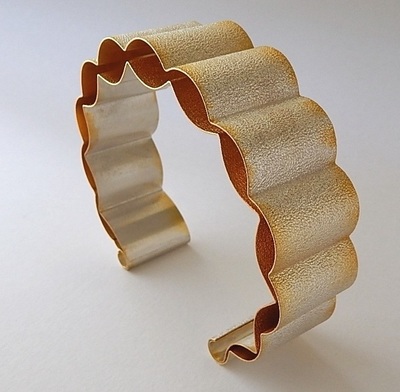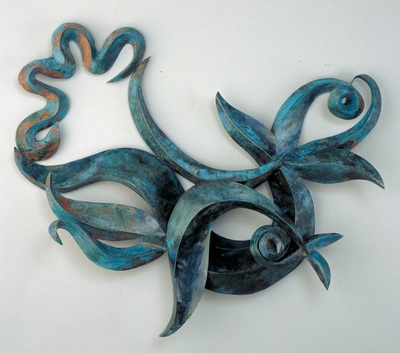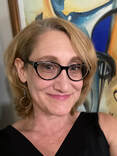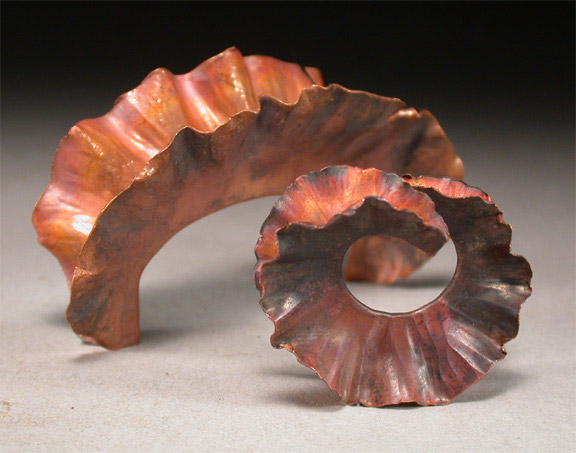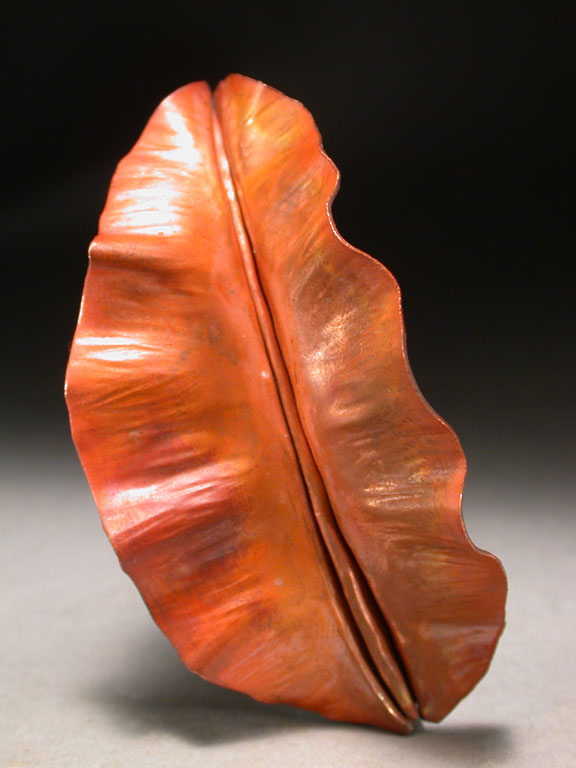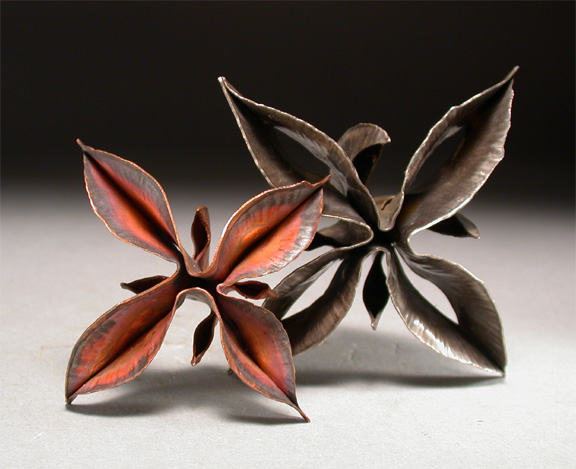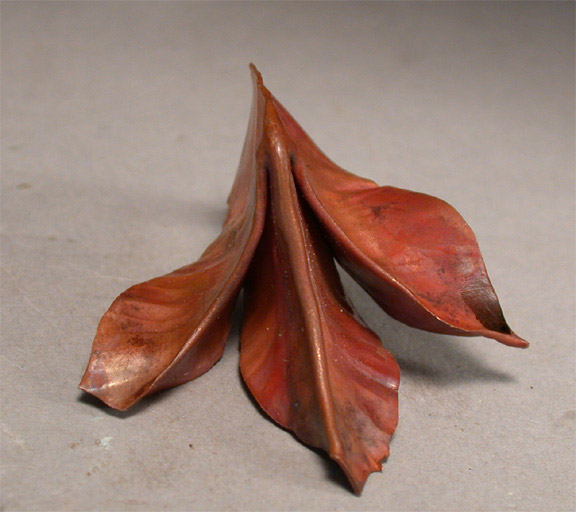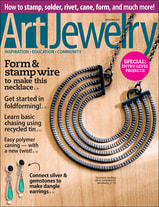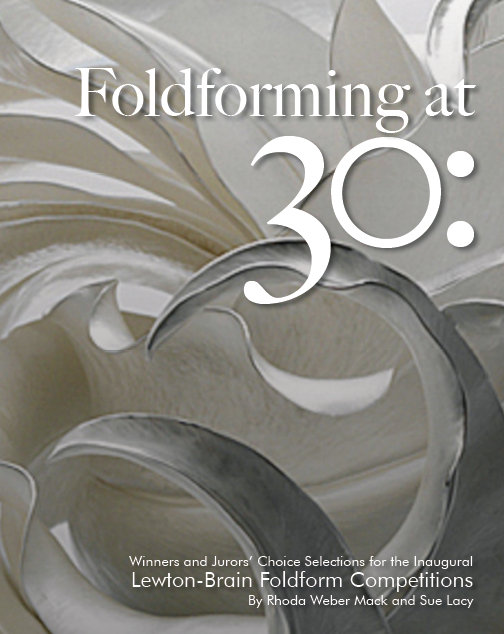The Evolution of Foldforming
|
This story first appeared in the Nov 2015 issue of Art Jewelry magazine.
|
30 years ago, Charles Lewton-Brain discovered a brand-new way to form metal.
Now, see how far foldforming has come!
Now, see how far foldforming has come!
FOR THE NEW METALSMITH, there is arguably no better starting point than foldforming. Beginners can learn simple techniques and create appealing objects almost immediately with a few basic tools and a little practice. And since the entire system is based on understanding and exploiting the natural properties of metal, foldforming offers invaluable lessons that will be applicable to any future metal work.
|
Advanced metalsmiths accustomed to precise construction techniques will also find foldforming a liberating outlet that offers surprising shortcuts to achieve form. A single line fold can look like wire soldered to sheet. Or, a piece of sheet metal can become a cup without any seams.
In short, foldforming can be used with wild success by beginners, increases in complexity to match the makers’ skill level, and adapts to a wide range of applications. What is Foldforming? Foldforming is derived from metal’s plasticity and its natural, predictable response to actions like folding, forging, bending, compressing, or work hardening. The resulting dimensional forms are often fantastically reminiscent of shapes found |
|
Results: The 2015 Lewton-Brain Foldform Competition
|
Origins of Foldforming
At just over 30 years old, foldforming is an overnight sensation in the long history of metal working. Humanity began exploring metallurgy back in the 3rd millennium BC, but it was only within the last two centuries that sheet metal became a plentiful commodity that could be “wasted” on experimentation. In the early ‘80s, when Lewton-Brain focused on sheet-metal innovation, the results were magical. As a student in Pforzheim, West Germany, Lewton-Brain was impressed by innovative coursework that urged students to incorporate marks created by working the metal into the design, leaving visible traces of the process in the finished piece. This departure from traditional techniques allowed the natural properties of metal to influence form and design. As a graduate student at State University New York at New Paltz, Lewton-Brain embarked on an intense personal study of “forming using metal characteristics.” His work with folded sheet metal evolved into the system now known as “foldforming.” Lewton-Brain began to publish and teach his new techniques, and foldforming was recognized as a new approach to metal working by the British Museum Research Lab in 1990. In The Innovators, Alan Revere (founder of the Revere Academy of Jewelry Arts) wrote, “As amazing as it may seem, nobody ever worked with metal this way in the more-than-10,000- year history of the craft.” And craftspeople around the world were happy to learn the new method and take it new directions. |
Delighted by the results of his students’ experimentation, Lewton-Brain named new forms after their originators. Paul Rueger expanded on line-fold shapes to create the dramatic “Rueger Fold.” Kevin Plunkett created the “Plunkett Fold,” a distinctive, repeatable form that begins with a simple T-fold and ends with a rolling mill or forge work. Kathleen Janzen explored cutting into the base form to create design opportunities, resulting in the highly adaptable “Janzen Fold.” Today, many local art centers and university-level metal-arts programs offer foldforming classes. In workshops, Lewton-Brain is quick to suggest topics that need more investigation, inviting students to explore areas like pleated folds or forms based on paper models, like origami. Metalsmiths from more than 25 countries participate in Foldforming Central, a Facebook group for artists who enjoy conversation and peer mentoring on the topic of foldforming. |
The Foldform Competition
In 2012, Lewton-Brain partnered with the Center for Metal Arts in downstate New York to launch a juried competition. Now in its fourth year, the Lewton-Brain Foldform Competition is a grand survey of the evolution in foldforming techniques. The joy of the competition is in the diversity of the submissions. This year, the jury (comprised of Lewton-Brain, Dr. Hanuman Aspler, and Art Jewelry Editor Hazel Wheaton), was faced with a tantalizing array of jewelry and wearables, small and large sculpture, tableware, vessels, and functional objects. Top prizes recognized an intricately detailed silver tea warmer by Dan Lippitt (page 45), a silverand-gemstone Torah Breast Plate with sleek, modern lines by Ira Sherman, a gracefully scalloped silver-and-gold bracelet by Christina Brandewie, and a large copper wall sculpture with mesmerizing curves by Linda Leviton. Revere, who was a juror for the 2014 competition, says, “Charles is … an outlier and a genius who thinks beyond what most of us can even conceive of. [He] opened the door to a whole new way of thinking about metal that everyone had overlooked, even though foldforming is intuitively obvious. … I am not surprised that there is a now a third generation of foldformers out there. Just like kids who grew up with computers, this generation takes foldforming for granted; it is part of their repertoire.” |
|
Foldforming at 30
An art book, Aug 2014 By Rhoda Weber Mack and Sue Lacy 2012-2013 Lewton-Brain Foldform Competition winners in full color with commentary by industry leaders Charles Lewton-Brain, Hazel Wheaton and Cynthia Eid. Purchase here. |
